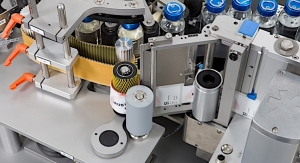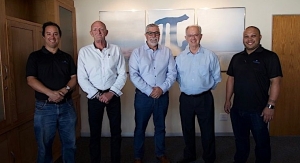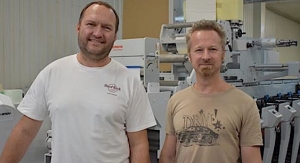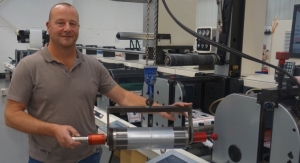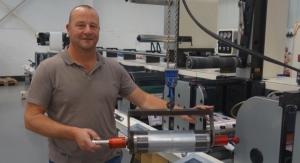Michael Lane, CEO, Meyers08.07.19
Maybe you’ve had an experience like this: You’re in the market for a new house and you spend months attending showing after showing. You see a few options you get excited about, and even a couple you could see yourself living in, if only they had one more bedroom or laundry upstairs instead of in the basement.
Ultimately, you realize nothing is quite right and decide to stay in your existing home. And since you didn’t make the purchase you expected, it’s tempting to view the hours you spent peering into closets and thinking philosophically about the ideal kitchen layout as wasted time. But why not consider it research? Because all that time exploring what works about other houses is a great way to understand how a reworked living room or some new landscaping could make your existing house the home of your dreams.
The same thing can happen with a business acquisition. Any significant acquisition requires due diligence. Business leaders do research to determine whether a deal makes sense financially and whether the capabilities they’d add are truly necessary. Sometimes the result of that process is a clear yes or no. But sometimes the answer is muddied by what you could call the “if only” factors. The acquisition would be perfect if only the price was a little bit lower. If only the facility was a few miles closer. If only the demand was a touch higher.
It’s easy in those situations to talk yourself into the acquisition. You’ve done the work, after all, and walking away means you’ll have nothing to show for it. Say the deal is a 50% fit. The inclination sometimes is to focus on the half of the deal that works and hope everything else falls into place down the line.
Just like with our hypothetical house hunt, however, the better perspective involves looking at the time and money involved in due diligence as an investment rather than a sunk cost and using the information you’ve gathered to identify opportunities that already exist within your own company.
Say, for example, you’re looking at a company with screen printing capabilities you don’t currently offer. You decide the deal doesn’t make sense, so you walk away. That doesn’t have to be the end of the story. You can use what you learned to examine your own operations. Is there a way to add that technique on a smaller scale? Or to adapt your current equipment to offer something similar? Ultimately, you will end up with a solution that fits you better at a fraction of the cost.
How do you do that? Once you’ve gone through due diligence, ask yourself a few simple questions:
Improvement is essential in any business, and one of the best ways to examine your own operation is by looking at the work others are doing. The kind of self-reflection you undertake as you consider an acquisition isn’t wasted time, then. It’s part of a process of continuous improvement, and it’s necessary if you want to keep your business from stagnating and falling behind the competition.
So, go ahead and explore those acquisition opportunities. They might lead to a purchase, or they might lead to new insights about the way you already do business. Either way, you win.
About the author: Micheal Lane is CEO of Meyers, a national provider of brand marketing and high-end commercial printing solutions located in Minneapolis, MN. He can be reached at mike.lane@meyers.com.
Ultimately, you realize nothing is quite right and decide to stay in your existing home. And since you didn’t make the purchase you expected, it’s tempting to view the hours you spent peering into closets and thinking philosophically about the ideal kitchen layout as wasted time. But why not consider it research? Because all that time exploring what works about other houses is a great way to understand how a reworked living room or some new landscaping could make your existing house the home of your dreams.
The same thing can happen with a business acquisition. Any significant acquisition requires due diligence. Business leaders do research to determine whether a deal makes sense financially and whether the capabilities they’d add are truly necessary. Sometimes the result of that process is a clear yes or no. But sometimes the answer is muddied by what you could call the “if only” factors. The acquisition would be perfect if only the price was a little bit lower. If only the facility was a few miles closer. If only the demand was a touch higher.
It’s easy in those situations to talk yourself into the acquisition. You’ve done the work, after all, and walking away means you’ll have nothing to show for it. Say the deal is a 50% fit. The inclination sometimes is to focus on the half of the deal that works and hope everything else falls into place down the line.
Just like with our hypothetical house hunt, however, the better perspective involves looking at the time and money involved in due diligence as an investment rather than a sunk cost and using the information you’ve gathered to identify opportunities that already exist within your own company.
Say, for example, you’re looking at a company with screen printing capabilities you don’t currently offer. You decide the deal doesn’t make sense, so you walk away. That doesn’t have to be the end of the story. You can use what you learned to examine your own operations. Is there a way to add that technique on a smaller scale? Or to adapt your current equipment to offer something similar? Ultimately, you will end up with a solution that fits you better at a fraction of the cost.
How do you do that? Once you’ve gone through due diligence, ask yourself a few simple questions:
- What opportunities does this acquisition create?
- Are there opportunities in our current operation to do something similar without an acquisition?
- Does this capability solve a problem for our clients?
- Is there a different way to solve the same problem?
Improvement is essential in any business, and one of the best ways to examine your own operation is by looking at the work others are doing. The kind of self-reflection you undertake as you consider an acquisition isn’t wasted time, then. It’s part of a process of continuous improvement, and it’s necessary if you want to keep your business from stagnating and falling behind the competition.
So, go ahead and explore those acquisition opportunities. They might lead to a purchase, or they might lead to new insights about the way you already do business. Either way, you win.
About the author: Micheal Lane is CEO of Meyers, a national provider of brand marketing and high-end commercial printing solutions located in Minneapolis, MN. He can be reached at mike.lane@meyers.com.





